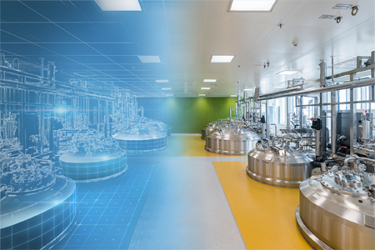White Paper: Application Of Plant & Process Models

This content was created by Boehringer Ingelheim BioXcellence™
Cell culture-based manufacturing of recombinant proteins, including monoclonal antibodies and antibody fragments, is traditionally divided into upstream and downstream processes. The upstream process focuses on generating the active pharmaceutical ingredient (API) in engineered cells, while the downstream process handles the purification and formulation of the API. These interconnected unit operations require meticulous coordination, particularly in multi-product facilities, to ensure manufacturing efficiency and optimal facility utilization.
Biopharmaceutical manufacturers face growing expectations for flexibility, cost efficiency, sustainability, and seamless process transfer and scale-up. These demands are compounded by evolving product requirements throughout the lifecycle and across diverse production portfolios. The industry is also witnessing a shift towards more complex molecular formats and sustainability-focused operations, requiring strategic solutions that balance economic, environmental, and operational factors.
Boehringer Ingelheim addresses these challenges by offering comprehensive solutions that optimize facility utilization and process efficiency through advanced plant, cost, sustainability, and process models. Our integrated approach unites upstream and downstream processes into a dynamic and adaptable system, enabling seamless process simulation. This approach has been successfully implemented to de-bottleneck Boehringer Ingelheim’s biopharmaceutical manufacturing facilities and perform gap assessments for early-stage products. These assessments help identify opportunities to adapt facilities or processes during development to meet sustainability goals, maximize output, and reduce costs.
We prioritize balancing plant occupancy, product yield, costs, and sustainability to create efficient, cost-effective, and environmentally responsible manufacturing processes. Our efforts extend across the entire Boehringer Ingelheim manufacturing network, leveraging synergies to further enhance operational efficiency. Looking ahead, we aim to expand these models to incorporate additional unit operations, such as drug product manufacturing, and broader pharmaceutical networks, paving the way for more integrated and sustainable biopharmaceutical production.
Get unlimited access to:
Enter your credentials below to log in. Not yet a member of Bioprocess Online? Subscribe today.
